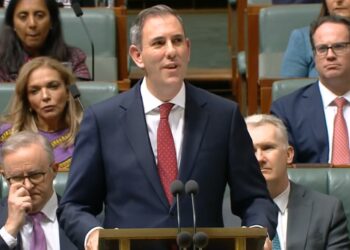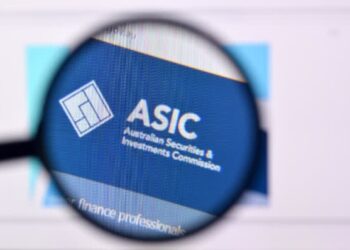The 2020/21 federal budget has defined Australia’s recovery from the COVID crisis as its main priority, with the government’s plan being to create jobs, provide targeted support to businesses and suppress the spread of the virus through the roll-out of the vaccine.
The government is aiming to have a population-wide vaccination program to be in place by the end of the year, with all Australians to receive their two doses by December, but international borders and tourism are not expected to reopen until 2022.
To date, around 2.7 million Australians, or a little more than 10 per cent of the population have been vaccinated since the government began its roll-out in February, Josh Frydenberg confirmed on Tuesday.
The document has described a positive outlook, but it admitted, “considerable risks remain”.
“Australia’s success in containing the health crisis to date has underpinned the economic recovery, but continued growth will rely on the effective containment of any COVID-19 outbreaks in Australia, including those that may arise from any new strains of the virus,” the budget strategy and outlook stated.
Nevertheless, the roll-out of the vaccine and continued fiscal policy support are expected to drive growth – the government has forecast real GDP will grow by 5.25 per cent during the 2021 year, after it fell by 2.5 per cent in 2020.
The underlying cash balance for the government’s budget is also now expected to be a deficit of $161 billion for 2020/21, $52.7 billion lower than what was expected six months ago.
Treasury has forecast unemployment will fall below 5 per cent by late 2022 and will reach 4.75 per cent in the June quarter of 2023.
To gear Australia towards reopening its borders, the budget has allocated $1.9 billion to be invested in the COVID-19 vaccination strategy and a further $1.5 billion to COVID health response measures.
Almost $8 billion ($7.8 billion) has been dedicated to tax relief being offered to low and middle-income earners, expected to inject extra cash into the economy, while businesses can benefit from further tax incentives, including asset write-offs, aiming to encourage investment, growth and hiring.
The government has also made commitments to invest in infrastructure, housing, the JobMaker fund and apprenticeships alongside the engineering construction sector, to further boost job creation.
This year’s budget has further pivoted to a focus on women’s outcomes, after Prime Minister Scott Morrison established a dedicated taskforce earlier this year– with measures targeted towards women’s safety, economic security, and health and wellbeing.
The government has committed $1.9 billion to a Women’s Economic Security Package, including $1.7 billion flowing towards an increased childcare subsidy over five years, for families with second and subsequent children aged five years and under.
It has also scrapped the $450 threshold for mandatory superannuation contributions from employers, benefiting low-income workers, particularly women.
Mr Frydenberg acknowledged the gender gap in superannuation, commenting the removal of the $450 threshold will “improve economic security in retirement for around 200,000 women”.
And around $1 billion has been delegated to implementing a comprehensive digital economy strategy, with the government aiming for Australia to be a leader in the space by 2030.
Other notable items are in health. Following on from the recent royal commission into aged care, the Morrison government has also dedicated $17.7 billion to transforming the aged care system. A further $13.2 billion is being delegated to the National Disability Insurance Scheme and $2.3 billion is being placed towards a National Mental Health and Suicide Prevention Plan.
Tax
- More than 10 million low and middle-income earners are expected to benefit from the extended tax cut costing the government $7.8 billion, which will see individuals benefit by up to $1,080 or $2,160 for couples. The government expects the extra cash will flow towards businesses, encouraging more employment or investment – boosting GDP by around $4.5 billion in 2022-23.
- The government has also extended its temporary full expensing of depreciable assets for businesses, with turnover or income below $5 billion. The measure introduced in last year’s budget will be extended for another 12 months until 23 June 2023.
- The temporary loss carry back scheme will be extended by one year, allowing eligible companies to carry back tax losses from the 2022-23 income year to offset previously taxed profits as far back as the 2018-19 income year. Companies with aggregated annual turnover of up to $5 billion can apply tax losses incurred during previous years to offset tax paid in 2018-19 or later years.
- There have also been eased tax and regulatory measures for foreign investors, including relaxed financial services licensing.
Superannuation
- The downsizer scheme, which allows people to make a one-off contribution to their super worth up to $300,000 after selling their home, has been extended to individuals aged 60 years. Previously the eligible age for the scheme was 65.
- The government has also repealed the work test for voluntary non-concessional and salary sacrifice contributions to super. The work test required Australians aged 67 to 74 to work for 40 hours within 30 days to make voluntary contributions to their super (both concessional and non-concessional).
- The $450 earnings threshold has been scrapped, removing the need for workers to make more than $450 in a month for their employer to pay the superannuation guarantee.
Women’s economic security
- More affordable childcare has been listed as a key measure, with $1.7 billion to be invested, building on the current $10 billion that is provided annually. The childcare subsidy annual cap will be removed from July 2022, allowing increased childcare subsidies to be available to families with two or more young children (250,000 families are projected to benefit).
- “Women’s workforce participation is a social and economic priority and critical to Australia’s recovery, which is why the government is prioritising investment in childcare,” Jane Hume, Minister for Women’s Economic Security said.
- With a focus on jobs, the government has also placed $12.2 million towards the National Careers Institute Partnership Grants Program, aiming for more career opportunities for women. The budget has also thrown $42.4 million towards supporting women to pursue careers in STEM.
- The government has also committed $164.8 million to financial support for women who escape family and domestic violence.
- Women are also expected to benefit from the scrapped $450 super threshold, as well as extended access to the downsizer contribution scheme, the axed work test and the new Family Home Guarantee for single parents.
Infrastructure
The government has also committed $15.2 billion to new infrastructure projects around Australia, building on its $110 billion 10-year infrastructure pipeline. The commitments are expected to support more than 30,000 direct and indirect jobs. Melbourne intermodal terminal has scored a $2 billion investment under the package, in addition to various other road and rail projects.
Digital economy
The government has placed $1.2 billion towards the creation of Australia’s digital future. It wants Australia to be a “leading digital economy and society” by 2030.
One factor is the consumer data right (or open banking in the banking sector), which will continue to be implemented and the scheme is set to expand to the energy and telecommunications sector.
Another component is the provision of $124.1 million to developing Australia’s artificial intelligence capabilities, including a push for small and medium-sized businesses to adopt AI.
Housing
- The government has established a new Family Home Guarantee, which will be awarded to 10,000 families with single parents, allowing them to build a new home or purchase an existing home with a 2 per cent deposit. It is estimated that around 125,000 single parents may be eligible, with around 84 per cent being female.
- The maximum amount of voluntary contributions that can be made under the First Home Super Saver Scheme has been increased from $30,000 to $50,000.
- The New Home Guarantee that supports first home buyers in building a new dwelling or purchasing a newly constructed home by providing a guarantee to participating lenders for up to 15 per cent of the property purchase price.




what about the ridiculous $25,000 concessional cap??????????
Goes to $27,500 as expected.